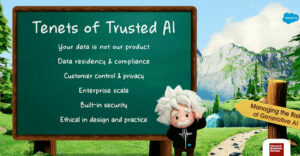
Peter C. Whybrow, M.D., is a neuropsychiatrist and director of the Semel Institute for Neuorscience and Human Behavior at UCLA, or at least he was when he published American Mania: When More Is Not Enough in 2005. In the book he quotes numerous economic thinkers and writers from the last 300 years, including Adam Smith (The Wealth of Nations) and Alexis de Tocqueville (Democracy in America), as he analyzes how we behave in modern business.
Whybrow’s book is definitely relevant today, though it was researched just before the social explosion of the last half decade. But that perspective gives added weight to his observations of humans as social beings before we became economic actors.
Whybrow’s chief assertion is that Homo sapiens evolved on the savannah as highly social creatures living in small hierarchical groups that provided mutual security (both protection and food), emotional support and served as a repository of knowledge. The time between when we lived in those small societies and today is infinitesimal in evolutionary terms, and thus one of his conclusions is that the human being performing as an economic actor today is virtually no different intellectually or emotionally from our ancestors on the savannah.
Social Amplifier
One of the big differences today is our communications reach. Small groups of our ancestors were about the size of a soccer team or an army platoon, and communication was face to face. Social media may hugely increase the size of one’s intimate community, but it does not change our social approaches or approaches to intimacy.
This is all highly important when figuring out optimal uses of these new technologies in business. To a high degree, businesses and individuals have very different reasons for approaching social media. Businesses see it as a nearly frictionless way to “meet” customers and possibly sell something. Regular people may just want to hang out and hook up. In other words, individuals seek community and for many of the same reasons that our ancestors aggregated.
We all know that modern social communities enable people to compare notes about vendors, products and services, as well as to provide support for many of the vendor conundrums customers face in the marketplace. Of course, people also approach the Internet and its social communities in their new incarnations as Homo economicus, but one should not assume that.
Given that slight misalignment of reasons for engaging in the social sphere, vendors are well advised to tread carefully when leveraging social communities for commerce. Two new books by respected thought leaders in the space offer their wisdom and advice for trading in this brave new world.
Two Views
In The Like Economy: How Businesses Make Money With Facebook, Brian Carter presents a primer on marketing and selling through Facebook. While Carter does a good job covering the basics, the feel of the book is like reading some marketing 101 treatise moved to social media. The assumption seems to be that this is a tool more or less expressly for business, all other considerations notwithstanding. You can read self-help styled chapters like “FaceBucks: Five Ways Businesses Achieve Profits With Facebook” and “How Not to Fall on Your Face: Six Mistakes That Block Facebook Profitability.”
Carter’s approach is all business, which is fine, provided the reader has already understood that social media is not exclusively about marketing and sales and that people can turn you off like a light. Carter recommends many tactical things you can do to optimize your sales and marketing efforts, but I would have preferred some nod to the need for listening to customers or sponsoring real community give-and-take that may not be directed toward buying the next shiny object but to answering questions about the current one. In other words, blending in with the natives, so to speak.
A more rounded approach comes from Chris Brogan in Google+ for Business: How Google’s Social Network Changes Everything. At first glance, it’s funny that both authors seem to have a need to state in direct terms why the social network, which is their subject matter, is the first-best-and-only one for the assignment. Perhaps it is an artifact of the publisher that each uses, Que. While we’re at it, the cover designs aren’t that different either. But I digress.
What’s useful to me about Brogan’s effort is the more holistic approach he takes to commerce on the Web. Brogan starts at the beginning indirectly reminding us about some of our savannah heritage with sections like “Businesses Are Made of People,” “Connections Before the Sale” and “How You Appear to Others.” Most important, there’s a whole chapter on Circles, those aggregations of community members that have like reasons for being in some kind of a relationship with you to start.
There’s more too, like Chapter 8, “The ‘Warm’ Sell,” with sections like “Attention Is a Gift” and “Make It About Them.” I could go on, but if I had my druthers, Brogan’s approach, regardless of the social network I choose, would be my preferred way of getting the job done.
Like Carter’s book, though, I would have appreciated it more if Brogan had managed to insert a bit more of community away from the sales process into his offering. In the future of Web commerce, I doubt companies will have one community for service and another for sales and marketing. It’s all becoming one, and some of the best marketing can come from listening to and understanding a customer’s problems or issues, especially if you can turn that issue into a need. Each book is missing a discussion of the new role of the community manager and a bevy of people whose job is to listen and administer the communities. Regardless of how frictionless this kind of commerce is, it does require work.
I think the more we regard the community as something with roots on a real savannah, the more successful we will be in the new cyber savannah.
























































